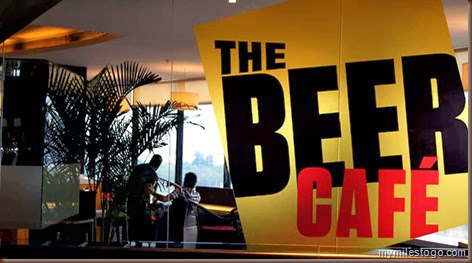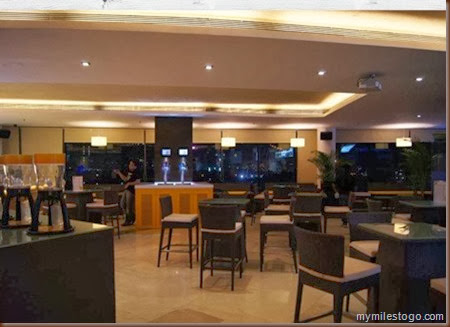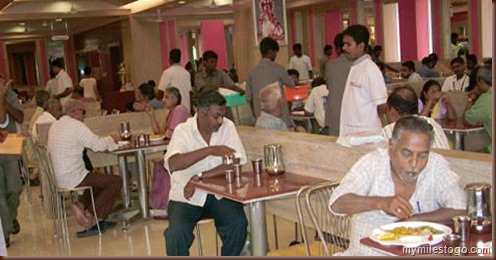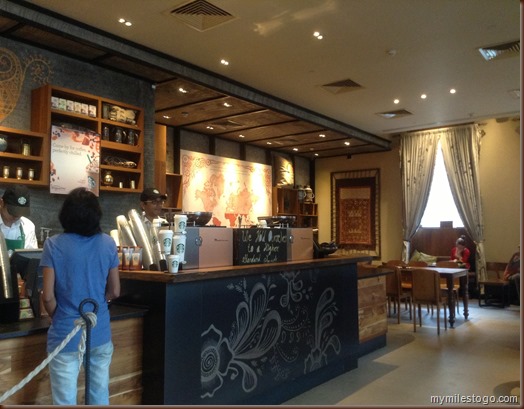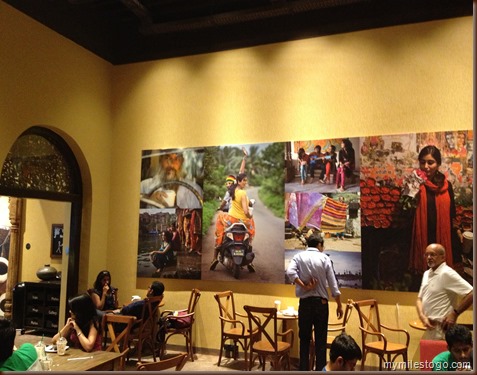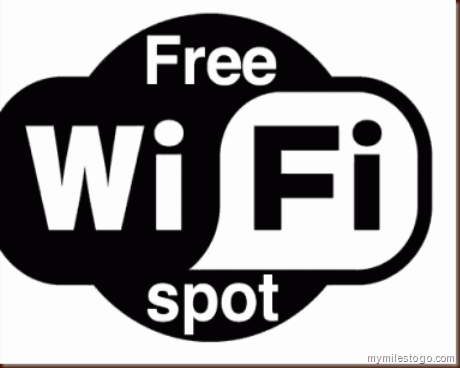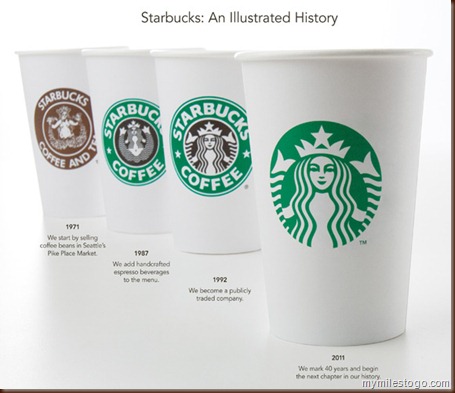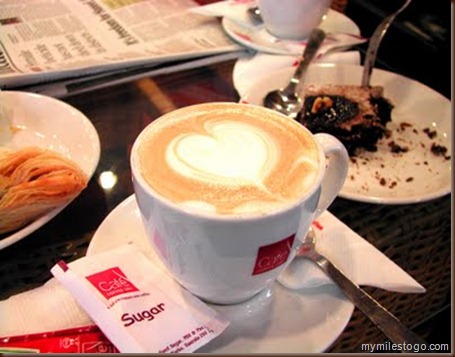07 April, 2017
E for Empowerment - Employee Empowerment
01 July, 2015
Are Cafes sustainable?
23 January, 2014
Dining experinces redefined

And then there are two large hotels which have over 25 rooms each, one being Hotel Vista Park where I stayed. These hotels also have restaurants and a small bar. To my utter surprise, there was literally no one in the in-house restaurants in the evenings. I would have expected the hotels to run a few schemes such as Happy Hours in the Bar or Food combos. But no. The staff were not bothered that guests were walking away to nearby restaurants. The Management seemed to be unaware as well.
So, are stand alone restaurants, pubs and cafes a threat to these Hotels? Indeed. To circumvent this kind of a spill over, Ginger Hotels, a part of The Tata Group had tied up with Cafe Coffee Day. The cafes of CCD are located within the premises of these hotels, usually in the lobby and would normally be open 24/7 and would even serve piping hot Cappuccinos and Sandwiches to the rooms. Most of the Ginger Hotels have these cafes. A few standalone hotels too have made such arrangements to attract non-resident guests and the public at large. In the West, it is common to see cafe chains such as Starbucks, illy, Costa, to name a few to have their cafes within smaller boutique/business hotels.
21 November, 2013
Brewing Cheer with Beer!
I recently happened to meet Rahul Singh, Founder and CEO of “The Beer Café”, an upcoming chain in Delhi NCR, based out of Gurgaon. Rahul comes across as an affable person, having spent over 20 years in the Indian Retail Industry. Before turning entrepreneur, Rahul was working for Reebok as Executive Director and was responsible for sourcing apparel for domestic as well as export markets. An electrifying guy, Rahul seems to have a natural flair for entrepreneurship. It was a chance meeting to discuss a business proposition but turned out to be a very engaging 90 minutes one on one. Prior to The Beer Café, Rahul was responsible for creating the first ever indoor Golf centre along with F&B and Entertainment at Gurgaon, at the upscale Ambience Mall.
I couldn’t resist but to ask Rahul how many months did he take to come up with the idea of a Beer only place. He was quick to retort saying that it took him just two months! I loved the way he simplified his method of narrowing down the concept. According to Rahul, there are three broad categories in the F&B Business – Fine Dine, Quick Service and Fast Food. He chose the Fast Food model. Within that, there were two options – to focus on food or beverage and he chose the latter. And within Beverages (read Coffee Café chains like Café Coffee Day, Barista, Costa Coffee, Gloria Jeans and Starbucks which have more than 2,000 cafes in India), he chose cold beverages and that’s how the idea of Beer Café was born. Simple idea that relies on classy execution.
Rahul wants his chain to be the CCD of beer and conversations. Alcohol frees up the mind and the soul and today, one has fewer choices to consume a pint of beer, either at a restaurant or at a Pub (home parties are a limited choice though). So, he wanted to set-up Beer Cafes in convenient locations where people could drop by with their friends or colleagues at work for a quick chat or a relaxed conversation.
The Beer Café now has over 11 locations within Delhi/NCR and would have about 30 operational outlets within the next three months! With VC funding coming in, Rahul hopes to grow the café network substantially over the next couple of months. His only gripe: Real estate costs of First World with consumer spends of Third World. Every Retailer would agree to this quote. Operating Costs, especially store rentals are extremely high and staff attrition is another big challenge. Rahul is now looking for an able COO to run the business, so he could take a bigger role in managing Strategy and Expansion.
The café is very appealing, with bright lights and a friendly attitude of staff. On a weekday evening when I passed by at the Beer Café at the Ambience Mall at Gurgaon, there were many who were having a good time seemingly. And many more would be in times to come.
30 April, 2013
The Third Place just got costlier!
On Monday, 29th April 2013, The Tamil Nadu Hotels Association (TNHA) observed a one-day strike to protest against the Central Government’s decision to impose Service Tax on their businesses. Speaking to the media, TNHA President M. Venkadasubbu said, “The TNHA had taken the lead to organise similar associations in all states in this regard and a federation, the Federation of Hotel Associations, had also been formed for the first time in the country.The announcement of Service Tax was made by India’s Union Finance Minister Mr. P Chidambaram in the Union budget and had already come into effect, beginning this month… (April 2013). The Service Tax of 12.36 per cent levied out of the 40 per cent of the sales proceeds is illegal and a big burden on consumers who are already forced to bear the brunt of price escalation due to inflation. While the hotels and restaurants were already paying VAT ranging from 2 to 14 per cent, the new Service Tax levied by the Central government would amount to double taxation,” he said. ‘This problem of double taxation was discussed at a meeting organised by the Federation of Hotel Associations (comprising office bearers and representatives of hotel associations from all states) in Mumbai last week and a unanimous decision was taken to launch a nationwide bandh if the Central government did not roll back the Service Tax.’
Eating out has become extremely expensive over the past decade. I remember, when I was in Graduate School, with pocket money of less than Rs. 300/- per month, we could meet most of our out-of-home expenses including filling fuel for our bikes. Not so these days. The purpose of having a meal outside home, The Third Place as it is called is not just eating. It’s all about building camaraderie and relationship/bonding with family and friends. Ray Oldenberg defined the third place as an alternative to Home and Workplace in his research paper in 1991. Oldenburg calls one's "first place" the home and those that one lives with. The "second place" is the workplace — where people may actually spend most of their time. Third places, then, are "anchors" of community life and facilitate and foster broader, more creative interaction.There were already numerous such spaces all over the world. Cafes, Restaurants and other Eating Spots are among the most sought after third-places. In India, cafes and eateries have burgeoned all over the country in the past few years. Café Coffee Day, India’s largest café chain has over 1,400 cafes across the country. Starbucks, Costa, Coffee Bean and Tea Leaf, Gloria Jeans, Mocha and many other such international and domestic café chains have their outlets spread across major cities, providing an opportunity to people to hang around and discuss everything under the sun – from personal banters to professional meetings to matrimonial discussions, one can find all of those out there. Apart from Coffee Shops, there are over half a million eateries of various shapes and sizes across the country which provide Food & Beverage options. For nuclear families, eating out is one of the biggest entertainment these days, what with very little time to spend with the family!
With the proposed new tax, food bills are expected to go up significantly to consumers. For example, on a bill of say, Rs. 1,000/- for a family of four, the Value Added Tax ranges from 2-14%, so lets assume its on an average of 8%. So, the bill goes up to Rs. 1,080/-. The service tax of 12.36% is applicable on 40% of the Sales, so that works out to Rs. 49.44, rounded off to Rs. 50/-. Hence the total bill to consumer now is Rs. 1,130/- just because this family chose to eat in an air-conditioned restaurant…where such a tax is applicable. The definition is quite clear – whether serving F&B in an air-conditioned area is a sale or a service. As per the recent amendment in the Law, its both. While food is cooked and sold, it is also served (by waiters) and hence considered a service. Also, the a/c facility is meant for seating and consumption, thereby making it amply clear that it is indeed a service. While this rule will bring about encouraging revenues to the Government, those that are meant to suffer are the middle-class consumers. For students and youngsters, visiting their favourite coffee shop or a fast food joint would get more expensive, thereby creating a dent on their pocket money. However, for the affluent and well to do, the proposed hike may not mean much, given that their spending power is relatively higher. In most cases, such individuals / families don’t even check the bill – probably pay (usually by a credit card) and sign-off.
While inflation and cost of consumption have gone up significantly, the income rates haven’t gone up proportionately. This has left the middle-class with fewer options for recreation. And Eating joints may not be the most preferred Third-Places anymore! For F&B Retailers, it means reduced number of visitors. And business too.
22 March, 2013
Free Wifi will be a crowd puller for Retailers
I was at the Starbucks (SBUX) outlet in South Mumbai a few days ago. SBUX, in a JV with the Tata Group opened their first outlet in India in South Mumbai a couple of months ago. We had a long day ahead and decided to start our first meeting at this location for the sheer purpose of convenience. And ofcourse, some good coffee. Not awesome coffee, atleast for me. For which I would go back to Café Coffee Day, India’s largest café chain with over 1,400 outlets across the country which in my opinion still brews the best coffee in town despite lapses in service levels here and there once in a while. I was pleasantly surprised that the SBUX outlet offers complimentary wifi to those who wish to have a sip or grab a bite and spend time around at their cafe. Ofcourse, for me it wasn’t the reason why I chose my meeting venue there. But then, anything complimentary is welcome in this mean world, I say. So there I was, connecting all my three devices – the laptop, the iPadmini and the iPhone on wifi sponsored by Tata Communications (I felt it was a great marketing opportunity for them although they didn’t seem to use it as well as they could). I was online for over half an hour, finished my emails for the morning and was all ready to step out for my next meeting. The staff at SBUX, as friendly as they were, cheered every customer who walked in or walked out with a customary welcome or thank you respectively. Even as I was walking out, I wondered how happy I was as a customer using complimentary wifi at the café. I have a USB Data Card for my laptop, 3G for my iPadmini and iPhone. But then, its sheer convenience and speed to use wifi.
I have been extensively travelling since Aug. 2012, ever since I joined Royal Enfield where I am responsible for Dealer Development and expansion of other key pet projects for the company. I book my hotels myself, mostly on my Make My Trip Mobile App for the iPhone or on their website although the former is quicker and handy. While most of the hotels provide complimentary wifi in their rooms, only a few work seamlessly. It is usually patchy and the front office staff are usually unable to resolve the connectivity issue blaming it either on the service provider or sometimes on my device! (Yes, at a Delhi hotel, the staff claimed my iPadmini was faulty). These days I look for reviews on sites like Trip Advisor while choosing a hotel that provides complimentary wifi. And most reviews are correct and genuine, as I have experienced.
That set me thinking, what if other Retailers provide Wifi to their customers. Would it bring additional walk-ins? Would it increase the stickiness? Would shoppers be showrooming – a term used for browsing the store for products and buying them simultaneously online, thereby increasing ECommerce? If so, would it help Retailers like Shoppers Stop and Landmark Book Stores which have a strong offline/online connect? I guess there are no immediate answers. Large Department Stores in the West have a café within their store so bored husbands and boyfriends could have a cup of coffee or a mug of beer while their wives/girlfriends are shopping. These days, my friends who live in the West tell me that Wifi is almost free everywhere around, which prompts them to choose a location for their need – be it a restaurant, a café , a book store or any other format of Retail. In India, unlike in the West internet bandwidth is minimal and the speed is not all that great. Cost wise too, it isn’t worthy for most Retailers to offer it free especially for those shoppers who just pass by and not really spend at their stores. Bangalore International Airport, where I worked many years ago was the first airport in India to offer free wifi for one hour to passengers passing through the airport. And most airports in India follow the trend albeit for a shorter duration. Atleast, large Indian Retailers should try this concept. With increased penetration of smartphones and tablets, there is abundance usage of data these days. Lousy 3G speeds by most Indian mobile networks mean an alternative connectivity which is what wifi is all about. Facebook and Twitter updates by the minute are not uncommon for those who are hooked on to their devices.
It’s just a matter of time that free wifi would become the thing of the day. Even now, I am sitting at another airport lounge while transiting from one city to another. And yes, this article would be published using the free wifi. Stickiness, I would say that I visit the lounge as often as I could, and just because of the complimentary boring food. If only the Lounge was more exciting with various marketing promotions other than the TV which is blaring music and bollywood gossip from one leading Indian channel just because they probably provide free Televisions!
31 January, 2012
India: Starbucks Coffee–A Tata Alliance
“We will look at expanding this partnership as a long-term relation... We are excited at building an enduring company that has a positive impact on India,” John Culver, President of Starbucks (China and Asia-Pacific), told reporters on Monday, 30th Jan 2012 at Mumbai, India. The company has signed a joint venture with the $ 80 Billion Tata Group, its first outing in India after waiting and watching the market for a long time now. Starbucks (Nasdaq: SBUX) operates over 17,000 cafes across 57 countries, with over 30% of them being outside the US (home) market. China has over 400 cafes since it opened in 1999. For the Tata Group, this is their second outing in the coffee business – earlier, they bought a 34% stake in Barista Coffee in 2001 which was later sold (in 2004) to the Sterling Group which later sold it to Lavazza of Italy (2007). “The joint venture with Starbucks is in line with Tata Global Beverages’ strategy of growing through inorganic growth focusing on strategic alliances in addition to organic growth,” R.K. Krishna Kumar, vice-chairman of Tata Global Beverages, told reporters.
(Suggested Reading: National Coffee Day)
The Indian coffee market has been well sought after for the past decade or so. Homegrown café chain Café Coffee Day has over 1,200 cafes across 140 cities in India and also has a presence in Pakistan, Austria and Czech Republic. The company, founded by serial entrepreneur VG Siddhartha and backed by Sequoia Capital and KKR among others has a deep rooted coffee heritage spanning over 130 years. The Coffee Day Group manages thousands of acres of coffee plantation in Chikmaglur, the coffee belt of Karnataka in the south of India and consumes most of its production for self-consumption and very little for exports (which was the other way around a decade ago). Barista Coffee, owned and operated by Lavazza from Italy comes a distant second with over 250 cafes across the country while Costa Coffee from the UK, which has a JV with Devyani International, a Delhi based business powerhouse comes close with over 140 cafes. Apart from this, there are several regional players who occupy a sweet spot for themselves in their respective markets.
So, what is in it for SBUX and for the Indian consumers?
Well, for SBUX it is a large play on an untapped burgeoning coffee market in India. With over one-third of the entire population of 1.20 billion under the age of 35, there is no better market than ours for a café chain. With increasing earning ability and higher disposable incomes, Indian consumers want nothing but the best and hence there has been a mad rush by various apparel brands in the premium and high-end spectrum of the organized Retail Market. From McDonalds to Pizza Hut, Dominos and KFC, they are all here and have even tweaked their global menu, mostly for the first time to suit the Indian palette. So Starbucks has a ready market which is waiting eagerly to lap it up immediately. For the Indian consumer, there is a lack of differentiation today; they have been used so much to the CCDs and Baristas that they are eagerly looking forward to a change. With more consumers undertaking International travel on work and leisure, they get exposed to various facets and hence are expecting similar standards and offering.
Starbucks’ entry has been a dogma for many years now. There was an aborted attempt in 2006 when it planned a JV with The Future Group. And thereafter, it has been slow. This time, they seem to have got the JV right. Rest, as they say needs proof of the pudding. Well, you can’t really go wrong with the Tatas, given the way TRENT has managed its relationships with Woolworths, Tesco and Zara. However, they wouldn’t have an easy task to establish themselves, here’s why;
- Scalability – Delhi, Mumbai and Bangalore would contribute to over 1,200 cafes together, about three-fourths as many cafes in the country.To penetrate these markets wouldn’t be easy. And then to scale up. Well.
- Real Estate – While more and more Malls are coming up in the top 10 cities, High Streets will continue to remain a favourite for SBUX and this is an area they will indeed find a huge challenge, in getting the best locations
- Menu – While CCD has a more or less Indian menu (Read: suiting the local palette) no other café chain has done this – and would apply to SBUX as well
- Pricing – This would remain the most important competitive advantage that CCD would score against SBUX and probably all others. Getting this right would be a key challenge, to say the least
- People – To get high quality baristas and front-end staff is not going to be easy. With its rigorous process-driven approach, SBUX may find this as a problem but this is one that can be fixed sooner than the others above
(Suggested Reading: When Skill sets take over everything else!)
It’s now a matter of time that Starbucks would be all over, but probably not as ubiquitous as Café Coffee Day. There are neighborhoods, for example in Bangalore where CCD has half a dozen cafes within 3-4 sq. km. And this applies in Mumbai, Delhi, Hyderabad, Chennai, Kolkata, Pune, etc. as well. SBUX would probably take half the time (or probably lesser than) it took CCD to get as many cafes, but that’s still a long way ahead. It was announced yesterday that the first few cafes would come up at Delhi and Mumbai, which is a disappointment for me (living in Bangalore) but also strange that Bangalore has not been given its importance. Anyway, look forward to having a large café latte soon!
The above video has been shared from www.starbucks.com
A Firefly finally takes off
Monday - 22 Jan. ‘24 is a very important day in my professional life. I complete eight months today in my role as Executive Vice President a...

-
12 December is celebrated annually as Retail Employees Day, an occasion to thank the frontend staff who have taken up Retail as their pref...
-
The world is split into two for the last week or so, ever since India’s self-made billionaire and tech mogul Mr. Narayana Murthy (NRN) said ...
-
It’s been over 5 months since I wrote anything on this blog, especially. Not that I didn’t have anything to observe, even better to share my...







